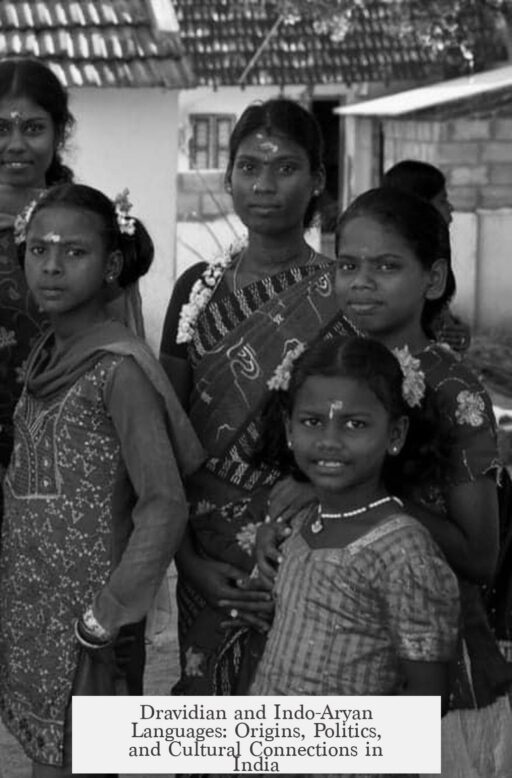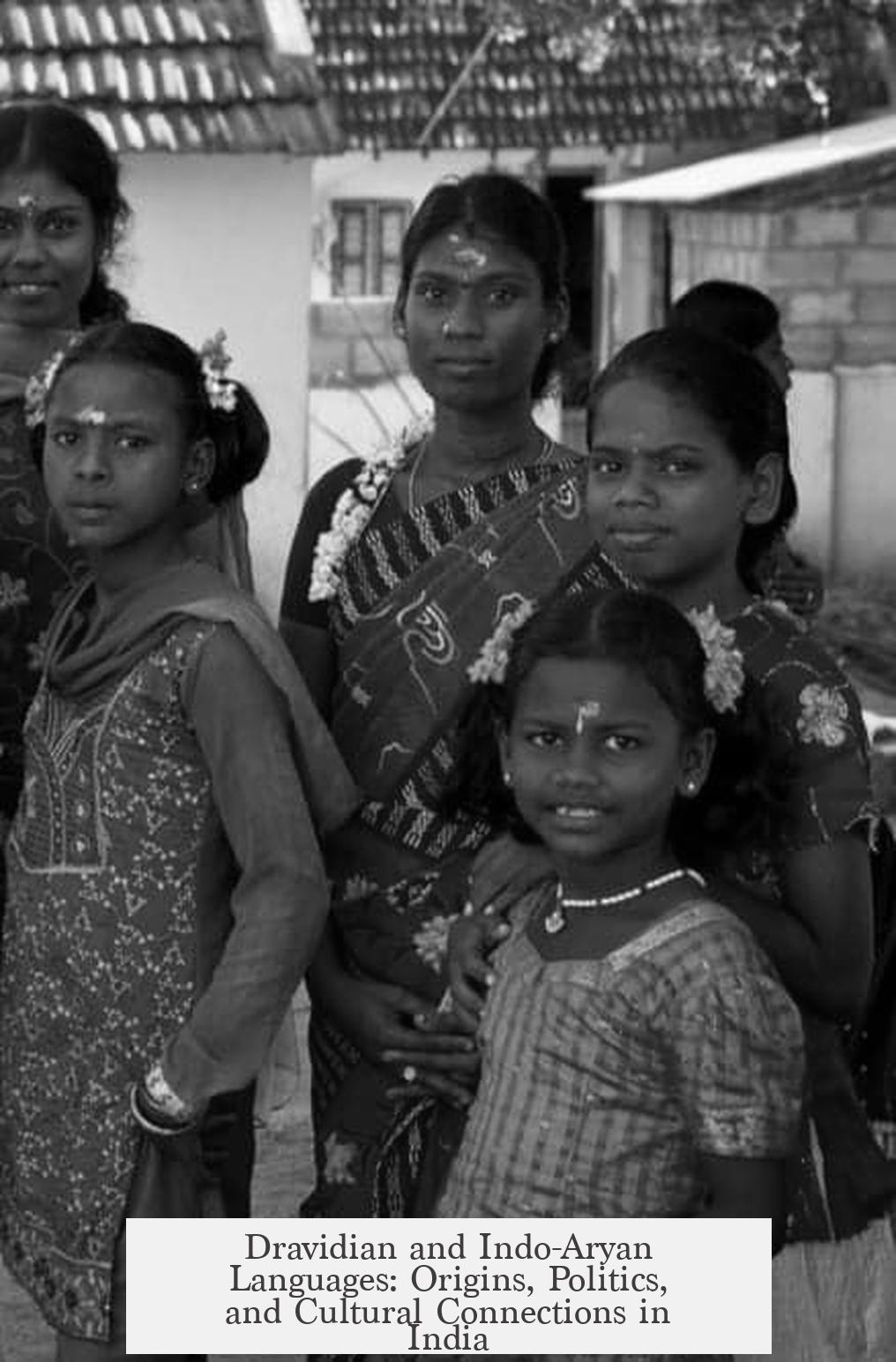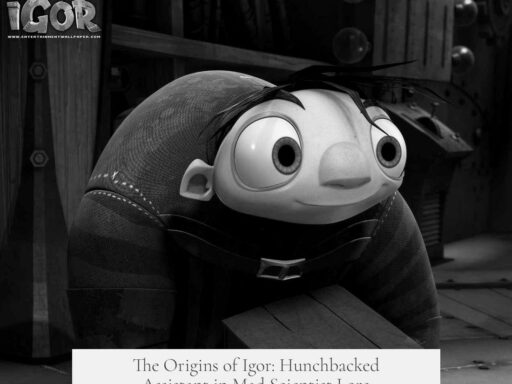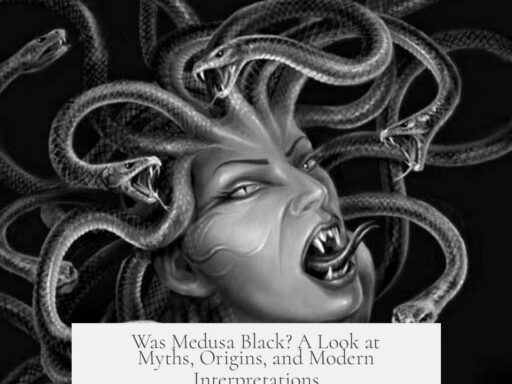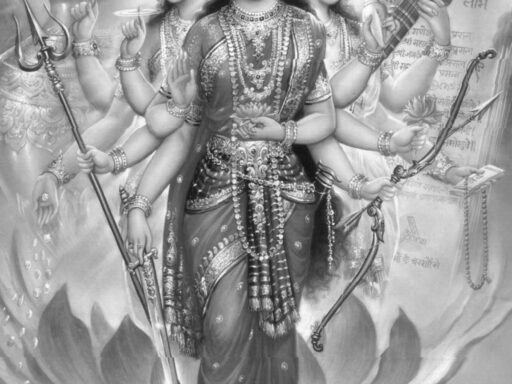Dravidian and Indo-Aryan refer to two distinct language families in South Asia rather than ethnic or cultural groups. Although these linguistic distinctions often overlap with ethnic identities, they primarily denote linguistic lineages, not homogenous populations or cultures.
The Indo-Aryan language family forms a branch of the larger Indo-European language family. It originates from the western Asian steppe, expanding outward around 6000 years ago. Indo-Aryan languages, including Hindi, Bengali, Farsi, and others, reached the Indian subcontinent around 2000 BCE. Earlier theories suggesting a large-scale invasion by Indo-Aryan speakers causing the collapse of the Bronze Age Indus Valley Civilization have been discarded. Current understanding favors a model of gradual migration and language adoption without significant population replacement.
Genetic studies support the idea that Dravidian speakers may have been the dominant population before Indo-Aryan languages became prevalent in northern India. However, this shift largely involves linguistic assimilation rather than demographic displacement. The Indo-Aryan migration theory carries political sensitivity, historically influenced by colonial interpretations positioning Indo-Europeans as conquerors bringing civilization, and by Hindu nationalist rebuttals denying any migration. Neither extreme view aligns fully with linguistic or genetic evidence.
Early state formations in ancient India emerged primarily in the northern plains, known as Arya-varta, including the Indus and Ganges river basins. These states spoke Sanskrit, an Indo-Aryan language, or Prakrits derived from it. Despite Sanskrit’s dominance in official and religious spheres, Prakrit literature predates some Sanskrit texts in age, indicating complex linguistic timelines.
South India developed states inhabited predominantly by Tamil speakers, representatives of the Dravidian language family, some centuries after northern state construction. Northern culture, via processes like empire expansion and Sanskritization, influenced the south significantly from the early centuries CE. However, cultural and linguistic exchange was bidirectional. South Indian cultural elements influenced the north during the first millennium CE, reflecting long-standing interaction.
Dravidian and Indo-Aryan language families differ fundamentally in structure and origin. Yet, centuries of cultural contact have generated overlap in vocabulary and ideas. Tamil and Malayalam, two Dravidian languages, show about 70% of their literary lexicon rooted in Sanskrit. These interactions demonstrate intense cultural and linguistic intermixing rather than isolation.
Indian culture overall exhibits significant commonalities despite language diversity. Hinduism, which originated as a synthesis of Vedic and Shramanic traditions in north India, spread to the south and evolved with contributions from multiple regions. Sectarian diversity within Hinduism allows considerable variation, including traditions with south Indian origins like Shaivism, later adopted in the north.
Population genetics reveal extensive intermarriage and blending of peoples across regions during the first two millennia after Indo-Aryan languages arrived. While the caste system became more rigid around 1900 years ago, reducing inter-caste intermarriage, linguistic and regional mixing persisted. The caste system introduced social hierarchies but did not strictly enforce separation based on language or region.
Present-day India shows a complex fabric of integration and diversity. Regional languages, cuisines, customs, and beliefs coexist alongside national cultural themes that bind the subcontinent. Political movements often emphasize distinct identities, yet shared history and culture remain strong unifying factors.
| Aspect | Dravidian | Indo-Aryan |
|---|---|---|
| Language Family | Dravidian | Indo-European (Indo-Aryan branch) |
| Geographic Focus | Primarily South India | Northern Indian plains, parts of India, Pakistan, Bangladesh |
| Origin | Indigenous to Indian subcontinent (uncertain antiquity) | Originates from West Asian steppe, migration around 2000 BCE |
| Language Influence | Strong vocabulary borrowing from Sanskrit | Derived from Indo-European root, includes Sanskrit, Hindi, etc. |
| Cultural Interactions | Significant exchange with northern cultures; shared Hindu traditions | Spread associated with early states, Sanskrit literature, Hinduism |
- Dravidian and Indo-Aryan denote language families, not ethnic groups.
- Indo-Aryan languages migrated to India around 2000 BCE without population replacement.
- South India developed Dravidian-speaking states independently but engaged in deep cultural exchange with the north.
- Hinduism and cultural practices show synthesis and mutual influence across regions.
- Genetic and linguistic mixing characterize Indian history, reducing strict cultural separations.
Dravidian vs Indo-Aryan: Untangling Language, Culture, and History in India
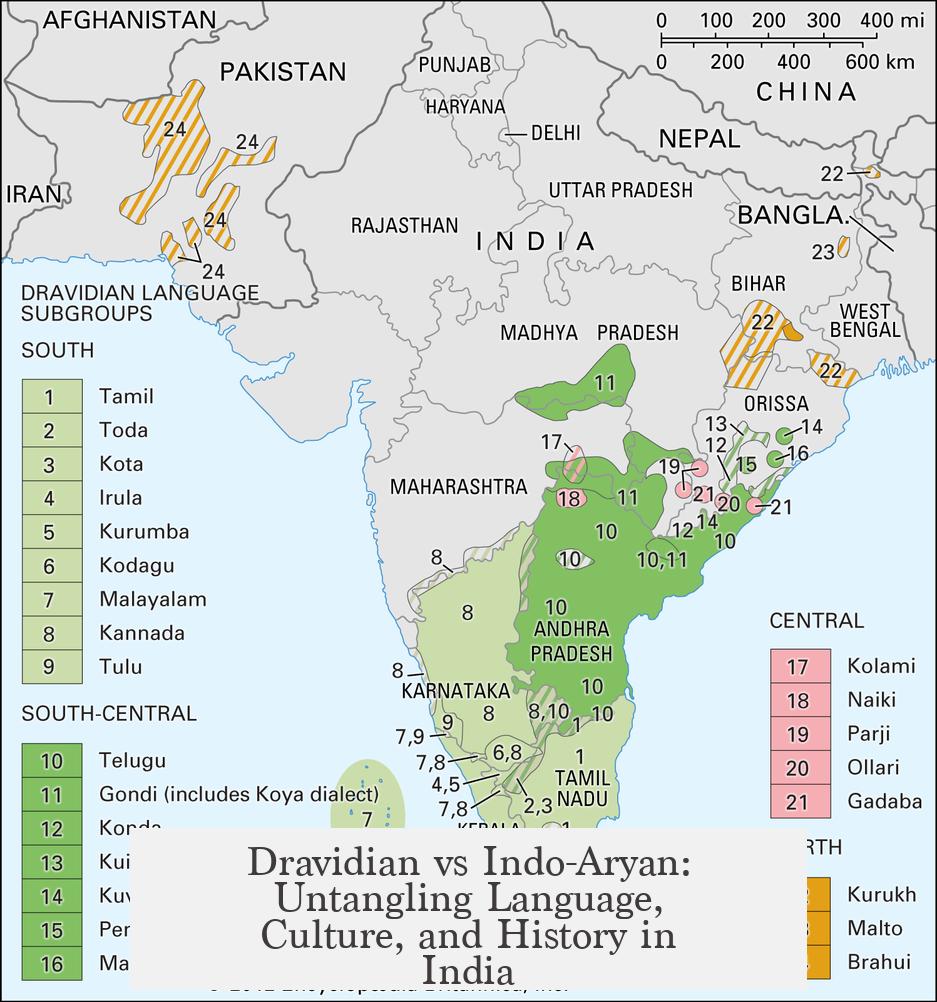
Dravidian and Indo-Aryan are language families, not ethnic groups. This is the first critical fact to grasp. They sometimes link to specific ethnic histories or cultural regions, but lumping them as ethnic categories misleads more than it clarifies. Think of it like identifying “Romance languages” vs. “Germanic languages.” They tell us how people speak, not necessarily who they are as a people.
Now that the basics are clear, let’s dive deeper into what makes Dravidian and Indo-Aryan so fascinating.
Where Did These Languages Come From?
Indo-Aryan is a branch of a much larger Indo-European language family. This family originated somewhere in the West Asian steppes about 6,000 years ago. For an idea, picture a vast grassy plain teeming with migrating herders, horses, and wagons. From here, the Indo-European languages spread in various directions. Indo-Aryan languages, including Hindi, Bengali, and Farsi, moved towards South Asia around 2000 BCE.
One old theory imagined Indo-Aryan speakers as nomadic conquerors who invaded and displaced the people of the Bronze Age Indus Valley Civilization. Cool story for a dramatic history book, right? But science isn’t about the coolest story—it’s about evidence.
Modern archaeology and genetics debunk this invasion tale. There’s no clear trace of violent conquest or large-scale population replacement linked to Indo-Aryan arrivals in the subcontinent. Instead, it appears these languages spread by a series of migrations and cultural exchanges. Populations blended rather than battled.
The Politicization Puzzle
Here’s where history gets a little spicy. The Indo-Aryan migration theory has long stirred political potions. British colonial scholars often portrayed Indo-European peoples as bringers of “civilization” to India, twisting linguistics into a tale of conquest and race. This fed colonial power narratives but tossed factual accuracy out the window.
Flip the script, and certain Hindu nationalist groups reject the theory outright. They argue that Indo-European languages originated from India or suggest Dravidian and Sanskrit-based languages share roots—claims linguistics consistently denies. The debate turns heated because it touches on identity, heritage, and politics, making the topic less about languages and more about who “owns” history.
When and How Did States Emerge?
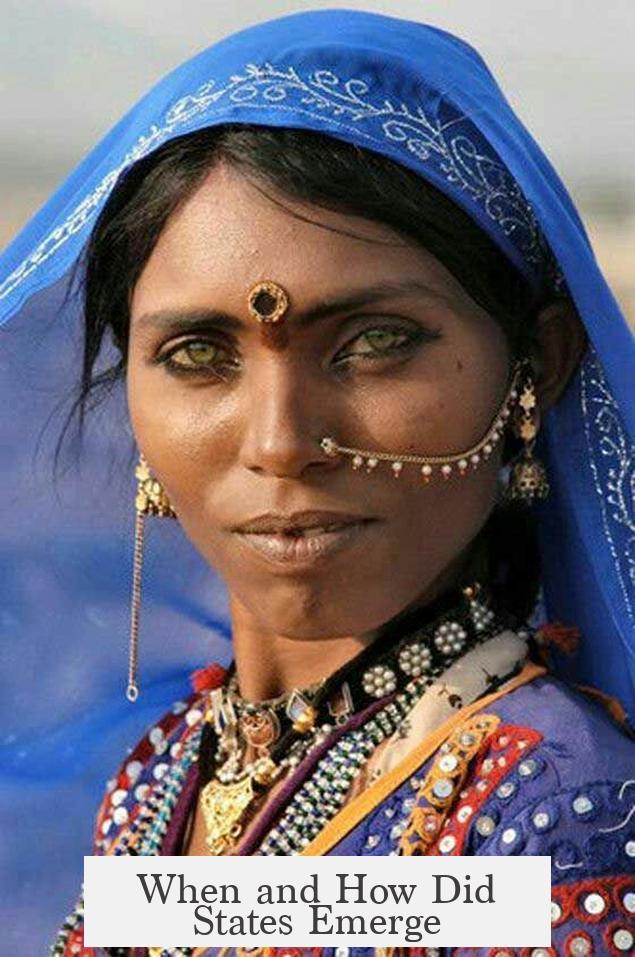
Ancient states first appeared in India’s northern plains— the arya-varta region, around the Indus and Ganges basins. These early states spoke Sanskrit, classified as an Indo-Aryan language. However, they mostly communicated in Prakrit languages by then—descendants of Sanskrit. Interestingly, some think Prakrit literature actually predates much of classical Sanskrit literature, which is a surprising twist.
Through complex processes like empire-building and religious spread, northern cultures extended beyond their river basins. Hinduism, which emerged from these regions, followed this wave southward. Meanwhile, southern India developed its own states speaking Dravidian languages like Tamil a few centuries later.
These two distinct language and cultural groups didn’t exist in isolation. The north influenced the south culturally through Sanskritization—where southern elites adopted northern languages and customs. But the influence also flowed back. Around the first millennium CE, southern South Indian cultural forms began making their way north. This two-way exchange created a vibrant, interconnected Indian civilization.
Common Culture with Regional Flavors
Despite differences in languages, Indian culture shows remarkable unities. Dravidian and Indo-Aryan languages belong to distinct families, but their speakers share significant cultural touchstones.
Take language itself: Tamil and Malayalam, two Dravidian languages, have more than 70% of their literary vocabulary derived from Sanskrit. How does that happen when Sanskrit belongs to the Indo-Aryan family? That’s India’s story of millennia-long cultural mingling translated into vocabulary.
Hinduism beautifully encapsulates this blend. It started as a synthesis of Vedic (north Indian) and Śramanic (more broadly Indian, including Dravidian regions) traditions. Far from being one uniform system, Hinduism includes multiple sects and beliefs—some probably originating in the south, like Shaivism, which then spread northward.
Genetic studies back these interactions too. For roughly 2,000 years following Indo-Aryan migration, intermarriage and mixing between northern and southern populations happened freely. However, about 1900 years ago, the caste system became more rigid, decreasing intermixing. This social stratification focused more on caste identities than linguistic or regional divides, marking a new phase in societal organization.
So, What’s the Takeaway?
India is complex, dynamic, and full of stories within stories. The terms Dravidian vs Indo-Aryan often cause confusion because they are language families, not neat labels for races or ethnic groups. The planet-sized history behind them shows migration, mixing, and mutual influence—not conquest and division.
Language and culture ripple out and overlap. Sometimes they diverge. Regional languages have local literature, food, and traditions. People feel regional pride—and yes, sometimes this leads to political friction. Yet, underlying these differences is a massive shared culture, a civilization continuously remade by contact and creativity.
So next time someone asks you, “Dravidian vs Indo-Aryan—who’s who?” you can smile and say: “Well, they’re languages that tell us a story of shared journeys, migrations, and conversations that shaped one of the world’s oldest continuous civilizations.”
Final Thoughts
If you want to plunge deeper, study the archaeological findings and genetic research. Look at Prakrit literature and Tamil poetry. Listen to Sanskrit chants and Malayalam songs. See how languages and customs borrowed from each other.
India’s history isn’t a tug-of-war between two language families. It’s more like a rich tapestry woven from threads of different colors and textures, all contributing to a vibrant whole. And that in itself is pretty amazing.
